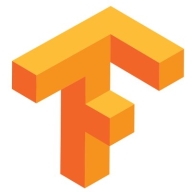

TensorFlow and Amazon SageMaker compete in the field of machine learning, with TensorFlow being an open-source framework and SageMaker offering a fully managed service. TensorFlow stands out in ease of use and flexibility, while Amazon SageMaker is praised for integrated tools and a robust service ecosystem.
Features: TensorFlow provides deep learning support, flexibility for customization, and a large community backing for problem-solving. SageMaker offers automatic model tuning, integrated Jupyter notebooks, and built-in algorithms for quick model deployment.
Room for Improvement: TensorFlow could enhance its deployment processes to ease infrastructure management, improve documentation for user-friendliness, and streamline community support channels. SageMaker might reduce the complexity of transitioning for users not deeply rooted in AWS, optimize cost management tools, and expand beyond existing AWS dependencies for wider appeal.
Ease of Deployment and Customer Service: TensorFlow demands users to manage their infrastructure, which adds complexity for less technical users. Amazon SageMaker simplifies deployment through AWS with pre-configured instances and comprehensive documentation, combined with responsive AWS customer support.
Pricing and ROI: TensorFlow, being open-source, offers low initial setup costs and favorable ROI when leveraging existing resources. SageMaker involves costs linked to AWS resources, possibly leading to higher upfront expenses, but its managed services can result in long-term savings by lowering operational overhead.


Amazon SageMaker is a fully-managed platform that enables developers and data scientists to quickly and easily build, train, and deploy machine learning models at any scale. Amazon SageMaker removes all the barriers that typically slow down developers who want to use machine learning.
TensorFlow is an open source software library for high performance numerical computation. Its flexible architecture allows easy deployment of computation across a variety of platforms (CPUs, GPUs, TPUs), and from desktops to clusters of servers to mobile and edge devices. Originally developed by researchers and engineers from the Google Brain team within Google’s AI organization, it comes with strong support for machine learning and deep learning and the flexible numerical computation core is used across many other scientific domains.
We monitor all AI Development Platforms reviews to prevent fraudulent reviews and keep review quality high. We do not post reviews by company employees or direct competitors. We validate each review for authenticity via cross-reference with LinkedIn, and personal follow-up with the reviewer when necessary.